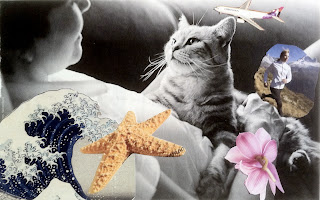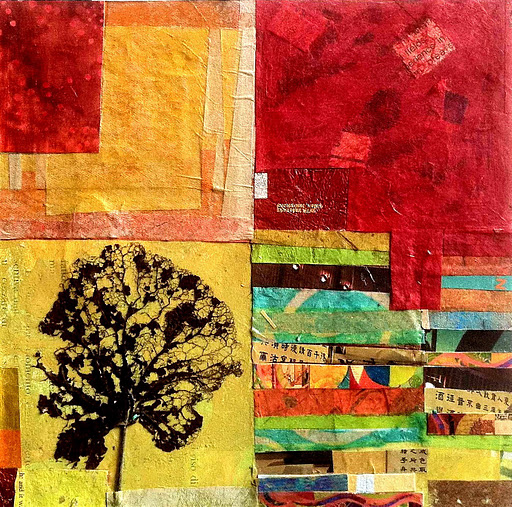 |
| ©2011, H. Hunter, Desert Renewal, SoulCollage® |
The title of last week's SoulCollage® workshop at the UC Davis Cancer Center was "Renewal; Exploring the the way archetypes can help us to find renewal in the midst of our daily lives." Without knowing it, I was practically begging several archetypes to enter my own life.
I showed up promptly at nine filled with the
news of Japan; its cumulative disasters of earthquake, tsunami and nuclear uncertainty. I walked up to the door and it was locked.
I wanted to wilt like a flower and go home. (But what had I experienced so far? An insurmountable barrier?) Instead, I called Plant Operation and Management.
As if by magic, a white truck drove right up the sidewalk toward me and a smiling women in a navy overall got out and opened up the building. "Did you get the call?" I asked her. "No, but I saw you standing there," she replied. My world was restored.
In order to get the group together quickly, I asked for help; putting participants to work unwrapping fresh pairs of scissors, cutting boards and x-acto knives. Even though I felt tongue tied by world events, I needed to keep going and talk about finding linkages in the heady and ineffable subject matter of archetypes. (Could you get a better set up for a trickster archetype to stick out its foot?)
We introduced ourselves by selecting an image that signified renewal. When one person showed a photograph of a red maple against what looked to be a Japanese garden, I commented how much that reminded me of her hometown, San Francisco, a place of renewal for her.
Unexpectedly, the whole group began to laugh. "Hannah--can you see--those are the red rock walls of a canyon!" The gods were definitely playing with me today: A locked door, mistaking a canyon for the
Japanese Tea Garden.
 |
| ©2011, A. McSweeny, Cat Love, SoulCollage® |
The women were game to explore the notion of how archetypes might play out in their lives to bring renewal. As they searched the table for compelling images, quiet took over the room,which deepened to an engaged silence as the work progressed.
We arranged the finished cards in a circle and walked clockwise around the table, readying ourselves for sharing. One woman commented that, "I can't believe it--all those pictures, just laid out on the table in no particular order--and out of that chaos, come these perfect cards that carry so much meaning."
It is my prayer that amongst the chaos of disaster in Japan, the people continue to recover pieces of their lives, bring them together and that healing becomes the order of the land.




